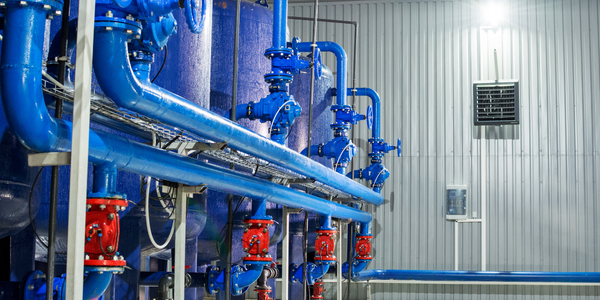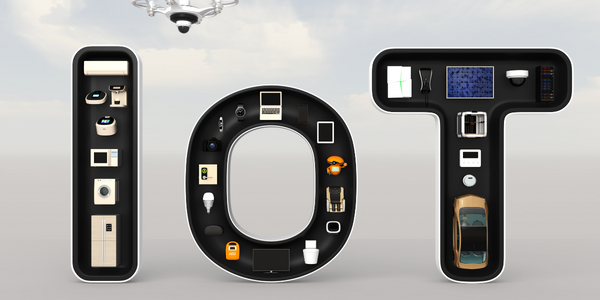Product Design & Production Design, All with One CAD System
Customer Company Size
Mid-size Company
Region
- America
Country
- United States
Product
- IRONCAD
- Smart eContentTM
- Smart eBehaviorTM
Tech Stack
- 3D Modeling
- CAD Software
- Design Automation
Implementation Scale
- Enterprise-wide Deployment
Impact Metrics
- Innovation Output
- Productivity Improvements
- Customer Satisfaction
Technology Category
- Functional Applications - Product Data Management Systems
- Analytics & Modeling - Digital Twin / Simulation
- Functional Applications - Product Lifecycle Management Systems (PLM)
Applicable Industries
- Equipment & Machinery
- Construction & Infrastructure
Applicable Functions
- Product Research & Development
- Discrete Manufacturing
Use Cases
- Digital Twin
- Rapid Prototyping
- Manufacturing System Automation
Services
- Software Design & Engineering Services
- System Integration
About The Customer
Checkpoint is a company with a rich history in construction and manufacturing, boasting nearly 200 years of combined product design experience. The company has been involved in a wide range of tasks, including erecting steel racks, TIG welding, general construction, carpentry, drywall work, electrical installation, plumbing, machining, mechanical assembly, carpet installation, painting, demolition, cabinetry, and fixtures. This extensive experience has equipped Checkpoint with a deep understanding of the practical needs and challenges faced on job sites. Inspired by their hands-on experience, Checkpoint aimed to innovate by developing a new family of tools that would enhance efficiency and ease of use in various tasks. The company is led by Dave Kemmerer, who identified a market opportunity for a smaller level tool that could potentially drive significant sales. Checkpoint's commitment to innovation and quality is evident in their pursuit of designing superior tools that meet the evolving needs of their customers.
The Challenge
Checkpoint, with extensive experience in various construction and manufacturing tasks, sought to innovate by creating a new family of tools that would be faster and easier to use than existing options. The challenge was to design these tools efficiently and effectively, ensuring they were superior to current market offerings. Dave Kemmerer, President of Checkpoint, identified a market opportunity for a smaller level tool at the low end of the market, which could potentially drive significant sales. The company needed a design solution that allowed for flexibility and rapid prototyping to meet these goals.
The Solution
Checkpoint selected IRONCAD for its unique approach to design, which offered the flexibility to make changes at any stage of the design process. IRONCAD's clean and simple design interface allowed Checkpoint to think in 3D and create models dynamically without the need for extensive pre-planning. This innovative design environment enabled the team to manipulate geometry independently of history while maintaining essential feature design information. Within an hour of starting their design in IRONCAD, Checkpoint had fully modeled the level and presented a rendered image of the finished product to management. This rapid development was crucial for Checkpoint's new super level and the entire product range of tools they envisioned. Furthermore, Checkpoint utilized IRONCAD's Smart eContentTM to create a fully automated production line for manufacturing. This feature allowed the team to reuse electronics and other components efficiently. IRONCAD's Catalog system, the foundation for Smart eContent, enabled easy creation and sharing of assemblies, parts, features, and other reusable content among team members and customers. Additionally, Checkpoint leveraged Smart eBehaviorTM to add intelligence and domain-specific knowledge to their products, allowing for quick configuration and construction of products with predefined rules and constraints.
Operational Impact
Quantitative Benefit

Case Study missing?
Start adding your own!
Register with your work email and create a new case study profile for your business.
Related Case Studies.

Case Study
Smart Water Filtration Systems
Before working with Ayla Networks, Ozner was already using cloud connectivity to identify and solve water-filtration system malfunctions as well as to monitor filter cartridges for replacements.But, in June 2015, Ozner executives talked with Ayla about how the company might further improve its water systems with IoT technology. They liked what they heard from Ayla, but the executives needed to be sure that Ayla’s Agile IoT Platform provided the security and reliability Ozner required.

Case Study
IoT enabled Fleet Management with MindSphere
In view of growing competition, Gämmerler had a strong need to remain competitive via process optimization, reliability and gentle handling of printed products, even at highest press speeds. In addition, a digitalization initiative also included developing a key differentiation via data-driven services offers.

Case Study
Predictive Maintenance for Industrial Chillers
For global leaders in the industrial chiller manufacturing, reliability of the entire production process is of the utmost importance. Chillers are refrigeration systems that produce ice water to provide cooling for a process or industrial application. One of those leaders sought a way to respond to asset performance issues, even before they occur. The intelligence to guarantee maximum reliability of cooling devices is embedded (pre-alarming). A pre-alarming phase means that the cooling device still works, but symptoms may appear, telling manufacturers that a failure is likely to occur in the near future. Chillers who are not internet connected at that moment, provide little insight in this pre-alarming phase.

Case Study
Premium Appliance Producer Innovates with Internet of Everything
Sub-Zero faced the largest product launch in the company’s history:It wanted to launch 60 new products as scheduled while simultaneously opening a new “greenfield” production facility, yet still adhering to stringent quality requirements and manage issues from new supply-chain partners. A the same time, it wanted to increase staff productivity time and collaboration while reducing travel and costs.

Case Study
Integration of PLC with IoT for Bosch Rexroth
The application arises from the need to monitor and anticipate the problems of one or more machines managed by a PLC. These problems, often resulting from the accumulation over time of small discrepancies, require, when they occur, ex post technical operations maintenance.

Case Study
IoT System for Tunnel Construction
The Zenitaka Corporation ('Zenitaka') has two major business areas: its architectural business focuses on structures such as government buildings, office buildings, and commercial facilities, while its civil engineering business is targeted at structures such as tunnels, bridges and dams. Within these areas, there presented two issues that have always persisted in regard to the construction of mountain tunnels. These issues are 'improving safety" and "reducing energy consumption". Mountain tunnels construction requires a massive amount of electricity. This is because there are many kinds of electrical equipment being used day and night, including construction machinery, construction lighting, and ventilating fan. Despite this, the amount of power consumption is generally not tightly managed. In many cases, the exact amount of power consumption is only ascertained when the bill from the power company becomes available. Sometimes, corporations install demand-monitoring equipment to help curb the maximum power demanded. However, even in these cases, the devices only allow the total volume of power consumption to be ascertained, or they may issue warnings to prevent the contracted volume of power from being exceeded. In order to tackle the issue of reducing power consumption, it was first necessary to obtain an accurate breakdown of how much power was being used in each particular area. In other words, we needed to be able to visualize the amount of power being consumed. Safety, was also not being managed very rigorously. Even now, tunnel construction sites often use a 'name label' system for managing entry into the work site. Specifically, red labels with white reverse sides that bear the workers' names on both sides are displayed at the tunnel work site entrance. The workers themselves then flip the name label to the appropriate side when entering or exiting from the work site to indicate whether or not they are working inside the tunnel at any given time. If a worker forgets to flip his or her name label when entering or exiting from the tunnel, management cannot be performed effectively. In order to tackle the challenges mentioned above, Zenitaka decided to build a system that could improve the safety of tunnel construction as well as reduce the amount of power consumed. In other words, this new system would facilitate a clear picture of which workers were working in each location at the mountain tunnel construction site, as well as which processes were being carried out at those respective locations at any given time. The system would maintain the safety of all workers while also carefully controlling the electrical equipment to reduce unnecessary power consumption. Having decided on the concept, our next concern was whether there existed any kind of robust hardware that would not break down at the construction work site, that could move freely in response to changes in the working environment, and that could accurately detect workers and vehicles using radio frequency identification (RFID). Given that this system would involve many components that were new to Zenitaka, we decided to enlist the cooperation of E.I.Sol Co., Ltd. ('E.I.Sol') as our joint development partner, as they had provided us with a highly practical proposal.






